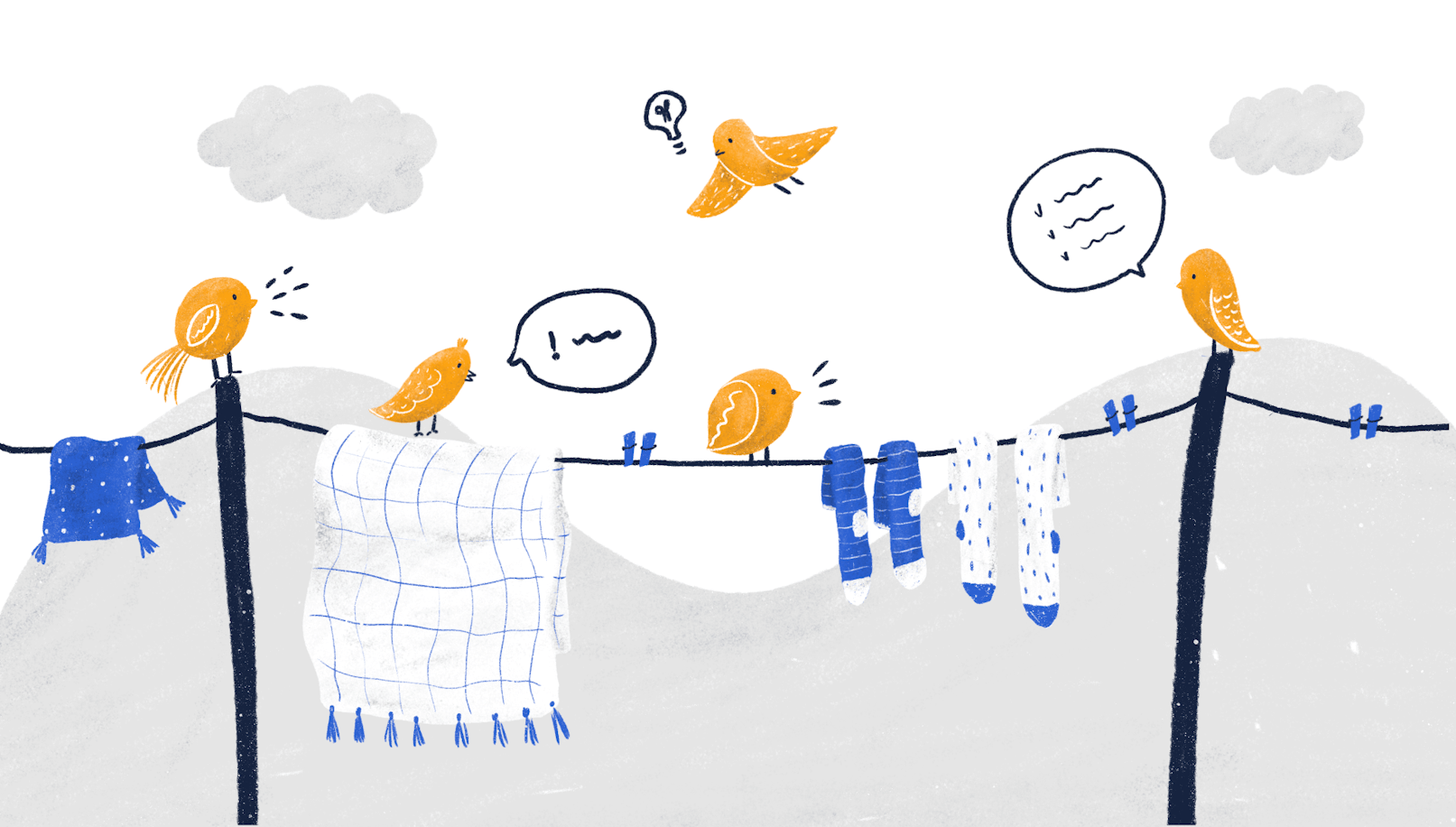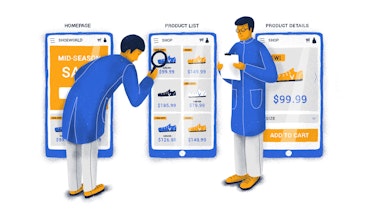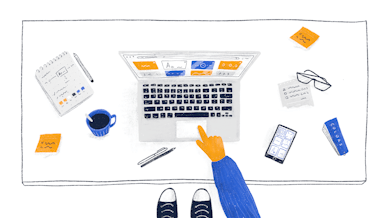Ideas are the currency of life. Being able to generate high-quality ideas will most certainly have a powerful effect on your products' quality and, arguably, your life.
We often hear romantic stories about business people or scientists waking up one morning with a genius idea, which they’ve then leveraged to produce groundbreaking work. Unfortunately, this isn’t how things typically work.
When it comes to product design, we can’t rely on “Eureka” moments to guide design work. Effective ideation demands a structured and methodical approach, which is precisely what this article is about.
Let’s dive right in, shall we?
So, what is ideation?
Ideation is an essential process that UX designers, and product people in general, use to generate a broad spectrum of valuable ideas that can then be used to fuel the design process. Its central goal is to explore a wide array of thoughts and concepts that can be applied to form or augment a product.
A well-conducted ideation session will provide the product team with a robust foundation for prototypes and ensure that all the viable options have been considered.

Why is ideation important?
Ideation isn’t just a helpful trick designers use to make products a little better. By tapping into this process early into the product design process, you’ll be able to address a host of potential issues, making your operations more efficient and cost-effective.
Here are a few significant benefits that ideation grants us:
An innovative and user-centric approach to design by addressing your users’ immediate needs;
An outside-the-box thought process that enables the team to go beyond the most obvious solutions;
Alignment across team members by ensuring a coherent strategy and vision;
A wealth of creative solutions that broaden design opportunities, allowing to develop products with maximum efficiency;
The grand scheme of things
Ideation is the third stage of the Design Thinking process — this is where the product team lays the groundwork for innovation and problem-solving. It’s preceded by the Empathize and Define stages that allow achieving a better understanding of the end-users and define product goals.
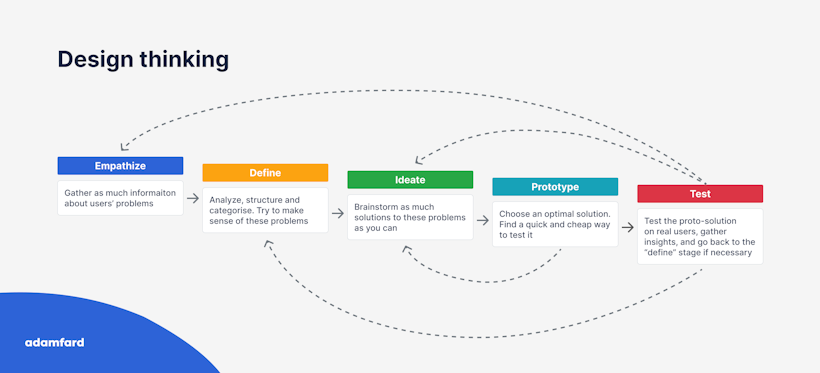
During the Empathize stage, designers develop a sense of empathy for customers, allowing them to understand and contextualize their experiences, fears, and motivations.
The Define stage, on the other hand, allows designers to assemble and analyze the data collected during the Empathize stage. This enables them to outline the central issues that a team has identified so far.
Ideation aims to build on the findings of the previous stages. It is when teams leverage their empathy for users and their design skills to solve the problems they’ve uncovered in the Define stage.
The empathy and definition stages exist for a good reason. Therefore, we wouldn’t advise diving right into brainstorming or other ideation activities without having your research done. If you do, you might end up ideating solutions for multiple problems at once, or a problem that isn’t actually one. Either way, it’s not the best use of your time.
How to ideate efficiently
In order for ideation sessions to be as efficient as possible, there is a variety of principles that need to be taken into account:
Although it may seem counter-intuitive, it’s essential to focus on quantity over quality. The more ideas your team can generate — the better;
It’s also essential not to criticize any ideas. Criticism has its time and palace in Design Thinking, but due to the focus on quantity, it’s best to abstain from disqualifying potential solutions at this time;
The more, the merrier. In order to broaden the spectrum of potential solutions, it’s always good to involve more people in the ideation process;
Challenge yourself and your team to think outside the box, regardless of how unreasonable some ideas may seem;
Make sure to save all the ideas in a live document. Having them visible will allow to leverage them for more inspiration;
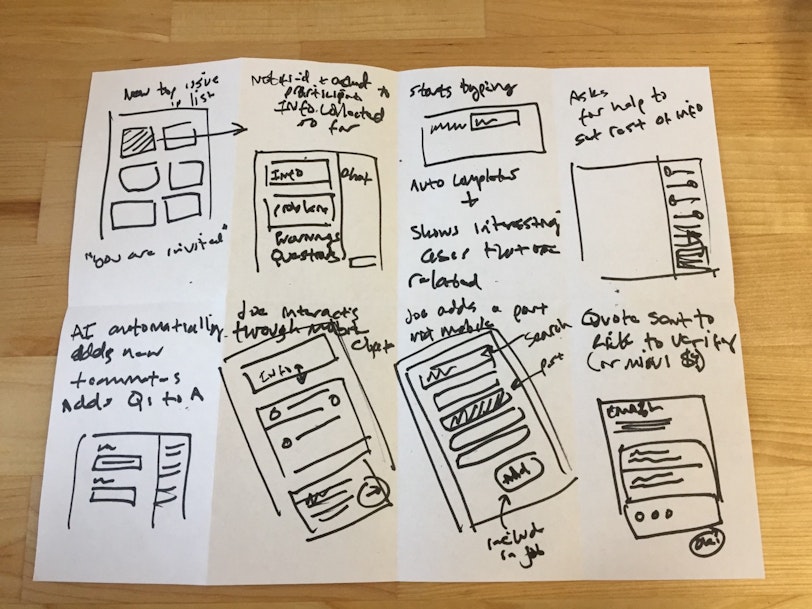
It’s important to underline that ideation can be applied in a variety of ways and for a multitude of scenarios. Whether it’s creating an additional feature for your product, rethinking tone of voice, or making changes to user journeys — this process will always serve as an invaluable tool.
Long story short, ideation, and design thinking in general works for problems that have a potential array of solutions (unlike a puzzle that usually only has one).
Tools, tips, and tricks
There are lots of things that can assist you with running fruitful ideation sessions. Here are a few of them:
Make use of post-it notes. They’ll be convenient during offline sessions. The limited space a sticky note offers also helps write ideas clearly and not get stuck with the details;
Try out Miro — it’s one of the best tools for ideation and remote workshops. The learning curve is fairly manageable, even for people who aren’t exactly tech-savvy. Ideation workshops aside, Miro is a great addition to your company’s digital tool kit;
Ideally, it would help if you had a moderator who would guide the participants through the workshop. The moderator will make the process smoother by explaining the rules and keeping activities in order. In startups and other digital projects, the UX team usually takes on this responsibility;
If that’s a remote ideation session, most of which in 2021 are, insist that the participants turn on their camera. If you don’t, the temptation to check emails, Instagram feed, or browse mindlessly through the phone might get the better of your team. You need your teammates engaged and invested in the process, or else you’ll end up exploring the surface-level solutions only;
Take a deep dive into ideation techniques. A notable one is the Crazy 8’s — take an A4 sheet of paper, fold it into eight rectangles or simply draw them. Sketch 8 different ideas or solutions in 8 minutes (1 minute per idea). There’s plenty more, find one that works best for your team;
Ditch limitations — feel free to explore options that don’t seem feasible at this time due to technical limitations. Although limitations might sometimes fuel creativity, don’t get caught up in overthinking and overanalyzing. Whatever your brain produces is good enough to document;
Lastly, at the end of the workshop go over each idea and make sure the whole team understands it. The next day after the workshop, you will 100% forget the context of some of the notes and their meaning as such. That’s why clarity is vital. Rephrase or flesh out the ideas that are likely to cause confusion further down the road.
What’s next?
Once your workshop has been conducted, it’s always a good idea to take a break and let your mind detach from the ideation process for a bit. This will allow you and your team to have a more objective perspective on the generated ideas and evaluate them fairly.
A rested mind is more conducive to proper decision-making and a careful assessment of ideas. Once you’re done with rest and recuperation, it’s time to structure the chaos that most good ideation workshops are.
Here are a few more things that will help you select the most useful ideas from the list:
Group similar ideas and merge identical ones;
Select the ones that make the most practical sense;
Try voting ideas into or out of your shortlist if opinions vary;
If facing issues with voting, consider coming up with categories like "ease", "impact", "cost", etc. and evaluating each idea with respect to a given category. This could even go as far as assigning different coefficients to each category. You can then add up the scores in each category to shortlist the best ideas;
Think of the least expensive and easy way to test the shortlisted ideas;
Keep following the Design Thinking process;
Conclusion
Ideation is an invaluable tool in the lifecycle of any product. It’s more than simply generating ideas — it’s a way to make sure that you explore all the options available and select the most viable ones. By doing so, you’re ensuring that your product will have a robust theoretical foundation that will fuel your design decisions.

